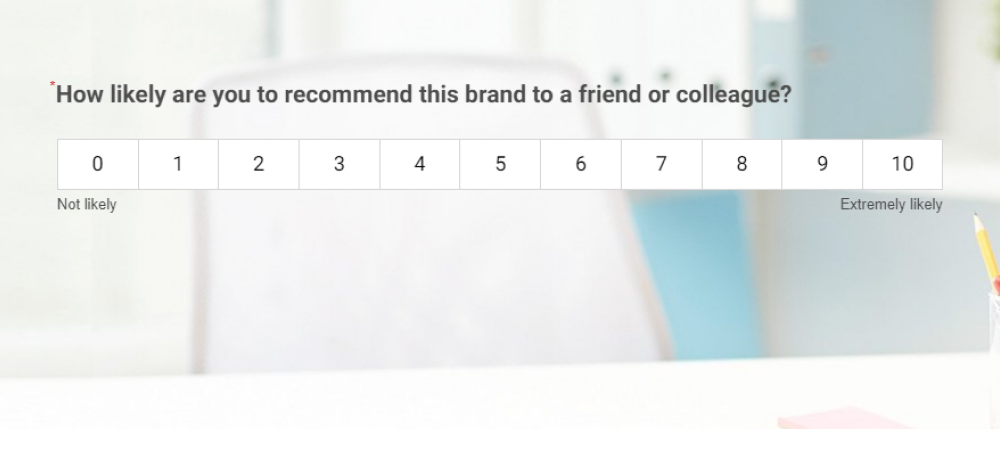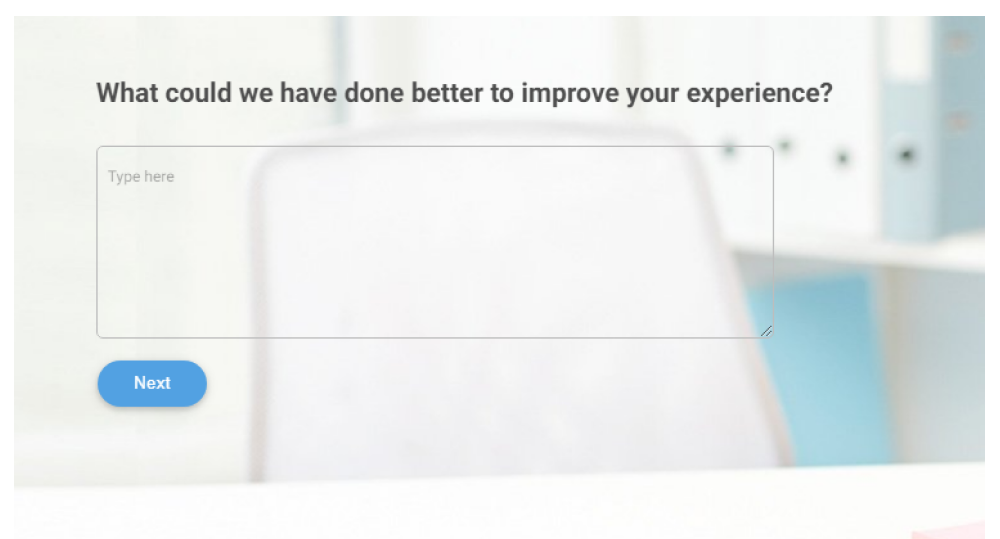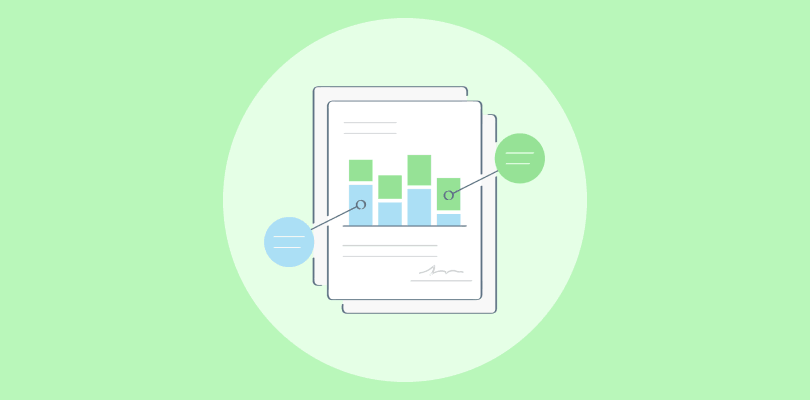
Ever built a fantastic product only to watch customers disappear after a single purchase? It’s frustrating, right?
Product quality matters in customer retention, but even if you have a stellar product, without loyalty, word-of-mouth buzz, or passionate advocates, brands seldom survive in the competitive landscape.
So, how do do find out what’s deterring your customers from being loyal? By asking NPS survey questions, of course! But here’s the catch: getting meaningful NPS insights hinges on asking the right questions.
This guide offers over 50 NPS question examples for all scenarios that you can directly use in your surveys.
Ready? Let’s begin.
Watch: How to Create a Net Promoter Score (NPS) Survey Easily with ProProfs?
What Is an NPS Survey Question?
An NPS survey question measures customer loyalty and satisfaction by asking respondents how likely they are to recommend a product, service, or company to others. It typically asks respondents to rate their likelihood of recommending your business, product, or service to a friend or colleague on a scale of 0 to 10.
Here’s a common example:
On a scale of 0 to 10, how likely are you to recommend [Company Name] to a friend or colleague?

The responses are then categorized into three groups:
- Promoters (9-10): These are highly satisfied and loyal customers who are likely to recommend your brand.
- Passives (7-8): These customers are satisfied but not overly enthusiastic.
- Detractors (0-6): These are unhappy customers who are unlikely to recommend your brand and may even discourage others from doing so.
The NPS question is often followed by an open-ended prompt, like “What is the primary reason for your score?” This follow-up question allows you to capture qualitative insights that explain the numerical score, giving a fuller picture of customer sentiment and areas for improvement.
Watch: How to Calculate Net Promoter Score: 3 Easy Steps
50+ NPS Survey Questions to Ask in Your Next NPS Survey
NPS surveys are not limited to a single question. To gain deeper insights, you can ask a variety of follow-up questions that capture different aspects of the customer experience.
Here are 50+ NPS survey questions across multiple categories to help you craft a more comprehensive survey.
1. Core NPS Questions
These are the standard NPS questions designed to measure customer loyalty and satisfaction. These questions are directly focused on understanding whether a customer is willing to recommend your product or service.
You can also use employee NPS (eNPS) survey questions to measure your employees’ loyalty to your company. It will also enable companies to prevent an employee from leaving your company by resolving their issues.
Use Case: Use these questions as the first step to gauge overall sentiment toward your brand.
Example Questions:
- On a scale of 0 to 10, how likely are you to recommend our product/service to a friend or colleague?
- On a scale of 0 to 10, how likely are you to recommend our company to other businesses?
- How likely are you to recommend our customer support services to others?
- How likely are you to recommend our [specific product] to others?
2. Follow-Up Questions for Promoters
These questions target customers who rated you 9 or 10. The aim is to understand what you’re doing well and what drives their loyalty.
Use Case: Use these to identify your key strengths and successful strategies, and to pinpoint what makes your promoters stay loyal to your brand.
Example Questions:
- What did you enjoy most about your experience with our product/service?
- What feature or aspect of our service would you like to see improved, even though you are happy with it?
- What convinced you to choose our product/service over others in the market?
- What’s one thing we should never change about our product/service?
- How can we further improve to keep you as a loyal customer?
3. Follow-Up Questions for Passives
These questions are aimed at customers who rated you 7 or 8. The goal is to uncover what prevents them from becoming promoters and how you can enhance their experience.
Use Case: Use these to identify areas where you need to improve to turn neutral customers into loyal advocates.
Example Questions:
- What could we do to earn a 9 or 10 rating from you?
- What’s the one thing you feel is missing from our product/service?
- Did any aspect of our service leave you less than fully satisfied?
- What factors influenced your decision to not give a higher score?
- What other companies or products do you consider alongside ours?
4. Follow-Up Questions for Detractors
These questions focus on customers who rated you between 0 and 6. The goal is to understand their dissatisfaction and find ways to address their concerns.
Use Case: Use these questions to identify critical issues that need urgent attention to prevent churn and negative word-of-mouth.

Example Questions:
- What is the primary reason for your score?
- What could we have done better to improve your experience?
- Did you face any issues or challenges while using our product/service?
- What do you feel is the biggest drawback of our product/service?
- What changes would make you reconsider recommending us?
5. Product-Specific NPS Questions
These questions focus on specific products or features to gauge satisfaction and identify areas for improvement.
Use Case: Use these when you want targeted feedback on particular products or features, especially after a launch or update.
Example Questions:
- How likely are you to recommend [specific product or feature] to others?
- What do you like most about [specific product or feature]?
- How does [specific product or feature] compare to others you have used?
- What additional features would you like to see in [specific product]?
- Did [specific product] meet your expectations?
6. Customer Experience NPS Questions
These questions focus on the overall customer experience, including interactions with customer service, sales teams, or support.
Use Case: Use these to gather insights on how different customer touchpoints impact overall satisfaction.
Example Questions:
- How likely are you to recommend our company based on your most recent interaction with our customer service team?
- How satisfied are you with the speed of our service?
- How effectively did our team address your issue or concern?
- How easy was it to find the information you needed on our website?
- How likely are you to recommend our company based on your purchase experience?
7. Relationship NPS Questions
These questions evaluate the overall relationship with your company beyond just one product or service.
Use Case: Use these to assess the strength of your relationship with long-term or high-value clients.
Example Questions:
- How likely are you to recommend our company as a long-term business partner?
- How satisfied are you with the quality of communication with our account management team?
- How likely are you to continue doing business with us in the future?
- How satisfied are you with the frequency and relevance of our updates or communications?
- How likely are you to refer other businesses to us?
8. Competitor Comparison NPS Questions
These questions compare your brand to competitors, helping you understand your competitive positioning.
Use Case: Use these to identify areas where you outperform or lag behind your competition.
Example Questions:
- How do we compare to other similar products/services you have used?
- What makes our product/service stand out compared to others in the market?
- What does our competitor offer that you wish we did?
- How likely are you to switch to a competitor in the next six months?
- What’s one thing our competitors do better than us?
9. Feature Feedback NPS Questions
These questions gather specific feedback on new or existing features.
Use Case: Use these after launching a new feature or update to understand its impact on customer satisfaction.
Example Questions:
- How satisfied are you with the latest feature update?
- How often do you use the [specific feature]?
- What is your favorite feature in our product, and why?
- Are there any features you find difficult or confusing to use?
- What additional features would enhance your experience with our product?
10. Open-Ended NPS Questions
These questions invite customers to share detailed feedback in their own words, providing qualitative insights.
Use Case: Use open-ended questions to uncover deeper insights and unanticipated feedback that may not emerge from close-ended questions.
Example Questions:
- What is the one thing you would change about our product or service?
- What was the most memorable experience you had with our brand?
- What do you think sets us apart from other companies in our industry?
- What would you like to see from us in the future?
- What’s the one thing we could do to make you happier with our product/service?
11. Retention and Loyalty NPS Questions
These questions measure customer loyalty and retention factors, helping you understand what keeps customers coming back.
Use Case: Use these to identify the core drivers of customer loyalty and retention.
Example Questions:
- How likely are you to renew your subscription with us?
- What is the biggest reason you continue to use our product/service?
- What would make you consider discontinuing your use of our product/service?
What Are the Types of NPS Survey Questions?
To get the most valuable insights from an NPS survey, it’s essential to diversify the types of questions you ask. Different types of questions help capture various facets of customer sentiment, experiences, and expectations. Here are the key types of NPS survey questions you should consider:
1. Quantitative NPS Questions
These are direct, numerical questions designed to measure customer loyalty and satisfaction levels. They provide a clear, quantifiable metric that is easy to track over time.
- Example: “On a scale of 0 to 10, how likely are you to recommend our product/service to a friend or colleague?”
Purpose: Establish a baseline for customer loyalty and track changes over time.
2. Qualitative NPS Follow-Up Questions
After collecting the core NPS score, these open-ended questions invite customers to elaborate on their score, providing context and deeper insights.
- Example: “What is the primary reason for the score you gave?”
Purpose: Understand the motivations behind a customer’s rating, whether positive, neutral, or negative, to uncover specific areas for improvement or strengths to build on.
3. Experience-Based NPS Questions
These questions focus on specific interactions or experiences the customer had with your company, such as a recent purchase, a support call, or a product feature.
- Example: “How likely are you to recommend our company based on your most recent customer service experience?”
Purpose: Identify which particular interactions impact overall satisfaction and loyalty, helping you pinpoint exactly where improvements are needed.
4. Customer Journey NPS Questions
These questions target different stages of the customer journey, such as onboarding, usage, renewal, or post-purchase. They help you understand how satisfaction varies at each touchpoint.
- Example: “How likely are you to recommend us after your onboarding experience?”
Purpose: Determine if any specific stage in the customer journey is negatively or positively impacting the overall NPS, allowing for targeted interventions.
5. Outcome-Oriented NPS Questions
Outcome-oriented questions focus on the results or benefits the customer has achieved by using your product or service. They gauge satisfaction based on whether the product/service delivers the promised value.
- Example: “How likely are you to recommend us based on the results you’ve achieved using our product?”
Purpose: Understand if the perceived value aligns with customer expectations, and how well your product or service delivers on its promises.
6. Comparative NPS Questions
These questions compare your brand, products, or services directly against your competitors. They are designed to understand how customers perceive your company in relation to other options available to them.
- Example: “How likely are you to recommend us compared to our competitors?”
Purpose: Assess your competitive standing and identify differentiators or areas where you need to catch up.
7. Engagement-Specific NPS Questions
These questions measure customer engagement with specific features, content, or services. They help identify which aspects of your offerings resonate most with your customers.
- Example: “How likely are you to recommend our [specific feature/service]?”
Purpose: Understand which parts of your product or service drive the most satisfaction and engagement, guiding future development priorities.
8. Retention-Focused NPS Questions
Retention questions are designed to uncover what keeps customers loyal and what might cause them to leave. They help you understand the factors influencing long-term customer retention.
- Example: “What would make you consider discontinuing your use of our product/service?”
Purpose: Identify potential risks to customer retention and address them proactively.
9. Behavioral NPS Questions
These questions focus on the customer’s actual behaviors rather than just their intentions or feelings. They provide insights into how customers engage with your brand in real life.
- Example: “Have you recommended our product/service to a friend or colleague in the past six months?”
Purpose: Validate NPS scores by linking customer intentions (likelihood to recommend) to actual actions.
10. Future-Focused NPS Questions
These questions look ahead to understand what your customers expect or hope for in the future. They help gauge long-term satisfaction potential.
- Example: “What features or improvements would make you more likely to recommend us in the future?”
Purpose: Gather insights on emerging needs or expectations that could affect customer satisfaction and loyalty down the road.
What Are the Benefits & Limitations of Using NPS Surveys?
NPS surveys are incredibly useful, but they are not without pitfalls. By understanding both the benefits and limitations, you can use NPS surveys more effectively as part of a broader strategy to enhance customer experience and loyalty.
Let’s have a detailed look at each:
Benefits of Using NPS Surveys
- Simple and Easy to Use: NPS surveys are straightforward for both businesses and customers. A single core question quickly gauges loyalty, making it easy to deploy and analyze.
- Benchmarking Capabilities: NPS provides a standardized metric that allows you to benchmark your performance against competitors or industry standards, giving you a clear view of where you stand.
- Predictive of Growth: NPS is a leading indicator of growth, as it directly correlates with customer retention, repeat purchases, and referrals—key drivers of revenue.
- Actionable Insights: Follow-up questions in NPS surveys uncover specific reasons behind scores, helping you pinpoint what drives satisfaction or dissatisfaction.
- Customer-Centric Focus: NPS helps build a customer-focused culture by consistently measuring and improving customer loyalty and satisfaction.
Limitations of Using NPS Surveys
- Lack of Depth: The simplicity of NPS can be a limitation. A single question may not capture the full spectrum of customer sentiment or the complexities behind their loyalty.
- Potential for Bias: NPS scores can be influenced by temporary emotions or specific interactions, which may not reflect the overall customer experience.
- Limited Context: NPS doesn’t explain why customers feel a certain way unless follow-up questions are included, making it less useful in isolation.
- Not Comprehensive: NPS focuses solely on the likelihood of recommendation, which may not always correlate with actual customer behavior or other important satisfaction metrics.
- Cultural Differences: NPS scores can vary across different cultures or regions, where willingness to recommend may be influenced by local customs or social norms.
Gather Actionable Data & Gauge Customer Loyalty With NPS Survey Questions Now!
Using NPS survey questions, you can not only measure customer satisfaction and loyalty but also gather deep insights into how a customer feels about your brand. It is an effective way to gather qualitative as well as quantitative feedback from customers.
By analyzing the responses to NPS questions, you can work on the constructive criticism received from the users to improve your products and services and boost customer satisfaction. This is what will keep your business growing and thriving.
You can also use the best NPS software like ProProfs Survey Maker to give wings to your customer research and feedback collection process. With ready-to-use NPS templates, you can create effective surveys, target the right audience, share them easily through multiple platforms, and access meaningful analytics to make informed business decisions.
Get started free or get a demo to know more!
Learn More About NPS Surveys
Where and when should you ask your NPS survey questions?
Ask NPS questions after significant customer interactions, like post-purchase, onboarding, or support experiences. Use digital channels like email, in-app pop-ups, or website prompts to reach customers at the right time.
When & Where to Implement NPS Survey Questions?
Implement NPS surveys at key touchpoints in the customer journey, such as after product usage, service delivery, or renewal. They can be deployed on your website, via email, in-app, or within customer portals.
Who should be using NPS survey questions?
NPS surveys are valuable for businesses of all sizes across various industries. They are particularly useful for customer success teams, marketers, product managers, and executive leadership to gauge customer loyalty and satisfaction.
How many questions should an NPS survey have?
An NPS survey typically includes 1-3 questions: the core NPS question, followed by 1-2 open-ended questions for deeper insights.
What is a good NPS score?
A good NPS score varies by industry, but generally, a score above 0 is considered positive, above 50 is good, and above 80 is excellent.
FREE. All Features. FOREVER!
Try our Forever FREE account with all premium features!








